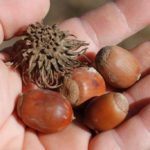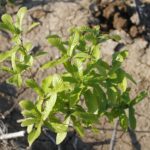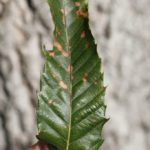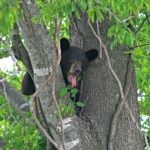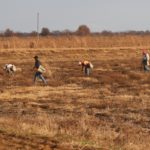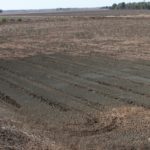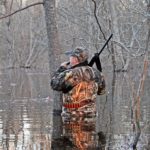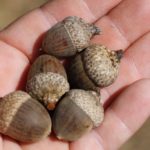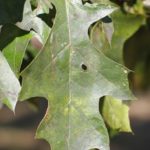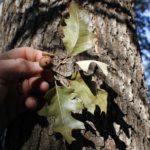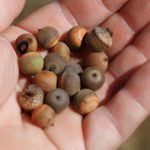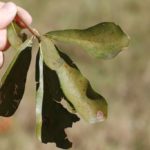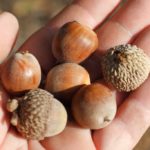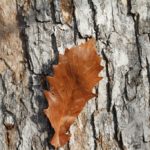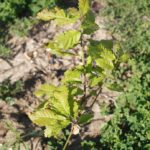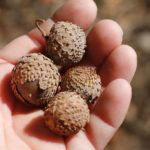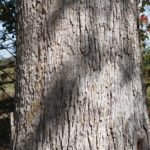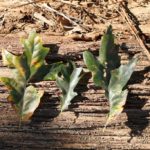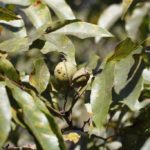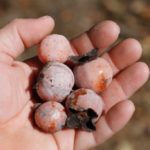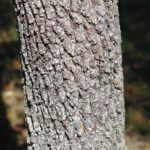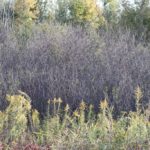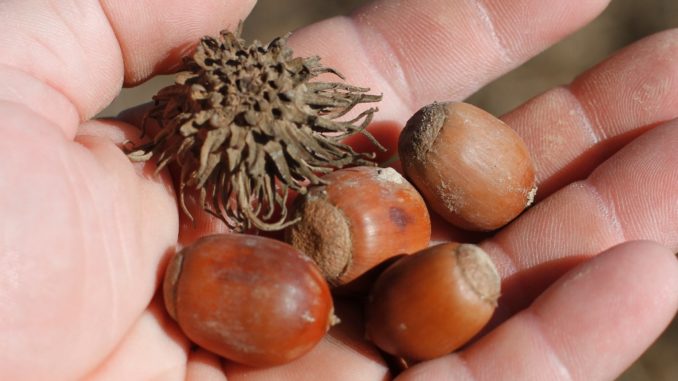
Think big and plant big, and you’ll see wildlife benefits for decades to come.
In my lifetime, I have only known the Delta to be an expanse of rowed-up dirt that is planted annually with various crops that feed and clothe the world. Deltans can look across a field that continues for miles with no apparent end. Approaching lightning storms on hot summer nights can be viewed from what seems to be as far away as Texas.
I was so accustomed to the wide-open vista that when I enrolled in Mississippi State in the early 1990s, I became immediately claustrophobic due to the surrounding timbered hills.
However, the wide-open Delta landscape that I and thousands of other Mississippians have known for the last 50-60 years is rapidly changing. More land is being pulled out of agricultural production and being restored to the bottomland hardwood ecosystem that it once was. I’ll never see it “like it used to be,” but it is exciting to see marginal, low-lying areas converted back to trees.
The first trees I remember seeing planted were in the early 1990s.
That land today is home to some of the finest whitetail deer hunting in Humphreys County, and the trees have just started to produce acorns in the last three or four years. Lately, thousands of acres of catfish ponds have been enrolled into the CRP program, and more bottomland hardwood restoration is taking place.
With the expansion of forested acres has come the increase in numbers of many wildlife species. Bobwhite quail can now be heard all over the Delta in young tree plantations. Whitetail deer are increasing in number. Predators like coyotes and bobcats can be seen most any time one is present on a young tree plantation. Turkeys are starting to utilize some of the older plantings, and many species of neotropical songbirds are using the Delta like they used to.
We will never get the passenger pigeon or the Carolina parakeet back, and we may never again see red wolves, panthers or ivory-billed woodpeckers in the Delta, but the wildlife that we managed to keep is reaping the rewards now.
“The Delta landscape is much different today than the one in which our forefathers lived,” said Ramsey Russell, certified wildlife biologist and registered forester who lives in Brandon. “In just the last three or four decades, total forest acreage has been greatly reduced to feed and house a growing civilization.
“Our beloved Mississippi Delta provides one of the most productive wildlife habitats in the world. The historic meanderings of its magnificent streams and rivers across the landscape have created a diverse topography of natural levees, ridges, backwater swamps and sloughs — a highly complex forest ecosystem of assorted soil, plant and animal associations that differ primarily from the adjacent upland environment because of seasonal inundations. The biotas of our delta forests are linked not only to high soil moisture corollary to seasonal flooding but, importantly, to the land’s vegetative productivity that is derivative of these phenomena.”
When I asked Russell what he thought were some of the most important trees native to bottomland hardwoods, he immediately said “nuttall oaks because of their survivability and adaptation to a wide range of sites.
“Cherrybark, water and willow oaks are also good mast producers adapted to better drained sites. Overcup oak grows well on wetter sites. Soft-mast species like persimmon, sugarberry, red maple, green ash and pawpaw are also important. Some of the latter mentioned species also are the first trees to provide nesting cover for ducks and migratory birds.”
But that doesn’t mean a landowner can just throw these trees up anywhere.
“There are many factors to consider when planting trees and shrubs, and sunlight is one of the most important,” said Dan Prevost, a wildlife forester with Delta Wildlife. “Hard-mast producers like oak and pecan are shade-intolerant, meaning the seedlings must have ample sunlight to grow and produce a crop. At a minimum, seedlings should receive light for 25 percent of the day, although 50 percent or greater is desired. Sunlight is also very important in fruit production. Inadequate light can often delay flowering and fruit production resulting smaller size and quantities of fruit.
“Forest openings, such as logging decks and small patch clearcuts, are an excellent place for supplemental tree plantings. Although somewhat impractical for large-scale plantings, containerized seedlings offer much better survival and growth than bare-root seedlings.
“Seedling height and root-collar diameter are also important. Seedlings around 24 inches tall with a root-collar diameter (found right above the roots) of about ½-inch are normally an acceptable minimum.
“Spacing is also important and will vary depending on management goals and objectives. Shrub plantings for quail can be spaced as close as 5×5 feet, while fruit tree plantings may be spaced up to 25 feet apart. Trees and shrubs should be planted in the dormant season, roughly mid-December through the beginning of March.
“Throughout much of the Mississippi Delta, cover provided by trees and shrubs is generally not an issue with whitetail-deer management. Quality mast-producing trees, or the lack thereof, is a common issue in habitat management. Historically, agricultural and pasture lands were divided into relatively small fields by fence or hedge rows that served as escape cover, travel corridors and generally a hub for normal day-to-day activities.
“As technology became more advanced, hedgerows started disappearing and the fields began to increase in size, resulting in a massive loss of quality habitat. In contrast to deer, quail and other small mammals need and utilize dense tree and shrub thickets that provide cover and protection from predators. Supplemental tree and shrub plantings are an excellent remedy for this dilemma.
“There are many species of shrubs available, some of which were introduced for habitat enhancement but have a tendency to become invasive. Autumn olive and bi-color lespedeza are two species that offer good cover and food, but can dominate a site by out-competing other, more desirable plants. Bi-color lespedeza is especially invasive when maintained by fire.
“Native trees and shrubs such as eastern red cedar, black cherry, sumacs, wild plums and shrub lespedeza are all excellent plantings that will provide both food and cover to a host of wildlife species.”
With these thoughts in mind, following are a list of trees and shrubs native to the Delta and/or bottomland areas that you can plant or manage on your property for wildlife benefits.
Nuttall oak
Nuttall is selected by foresters mainly for survivability and its ability to grow in wetter soils. Probably 50 percent or more of trees planted in bottomland hardwood restoration are nuttalls.
Nuttall oak in a natural setting is typically found on wet clay soils of flats and margins of swamps. It can grow on heavier, more poorly drained clays than other red oaks. Many of these areas are flooded throughout the winter.
Nuttall acorns are relished by deer, turkey and waterfowl. The acorns mature from September through October, but many stay on the tree well into winter, which makes them an excellent food source even in flooded areas. The dark, striped acorns, which are between .6 and 1 inches in length, can remain viable in water for more than 300 days, but their tendency to stay attached to the limb makes them excellent food for squirrels when the forest floor is completely submerged.
According to the Mississippi Trees guide, nuttall oaks are important mast producers for ducks in greentree reservoirs, and an acorn crop failure is rare.
Cherrybark oak
The cherrybark oak is so named because of the similarity of its bark to that of the cherry tree. It is not adapted to the wetter sites as is the nuttall; rather the cherrybark can typically be found on loamy sites of river bottom ridges, well-drained bottoms and loess hills along the Mississippi River. It is intolerant of flooding and shade. The brown, lightly striped acorns, which are more round than nuttall and only about .6 inches long, mature from September through November. The acorns are eaten by waterfowl, turkeys, raccoons, deer, squirrels and many forest-dwelling songbirds.
According to the Mississippi Trees guide, the acorns make up 10 percent or more of the overall wildlife diet in the Southeast. Cherrybark is also the most abundant, largest and most valuable timber tree in the river swamps of the Yazoo basin.
Willow oak
The willow oak, sometimes called the pin oak by mistake, is a common tree in bottomland forests. You have probably seen willow oaks lining streets in nearly every city in the South. A popular shade tree, willow oaks are fast growers as well as aesthetically pleasing.
In the natural setting, willow oaks grow on moist soils along rivers, particularly along ridges on well-drained silty clays and loams. I find them mainly bordering tupelo and cypress swamps on ridges that seldom go underwater.
Willow oaks are moderately tolerant to flooding, and do not do well in full-shade. The small, oval acorns measure from .4-.5 inches in length, and mature from August through October. Their small size makes them ideal food sources for birds, squirrels and ducks. You will rarely find willow-oak acorns floating in water without finding wood ducks feeding on them.
Swamp chestnut oak
The swamp chestnut oak, commonly called the cow oak, is not to be confused with the chestnut oak that is found in extreme Northeast Mississippi. The cow oak can be found on moist-soils and floodplains throughout the Delta, but usually it is found growing on well-drained, loamy ridges. This white oak is weakly tolerant to flooding and shade. The large, 1.4-inch-long acorns mature from September through October, and are one of the favorite trees to hunt by Mississippi archers. When the acorns start dropping in early bowseason, the deer will flock to them.
Due to the large size of the acorns, they are not favored foods of waterfowl and small birds. However, turkeys and squirrels will readily consume them. Humans can also eat the acorns, which are sweet enough to be eaten raw. The cow oak is allelopathic, which means it retards the growth of plants growing around it by exuding plant growth inhibitors. The cow oak has a high timber value, and the wood can be used for veneer, boards, fence posts and baskets.
Overcup oak
The overcup oak is a member of the white oak family like the cow oak, but it is probably the least preferred of the bottomland oaks in terms of acorns as a food source. The overcup oak can be found on the wettest of bottomland sites, growing in the lowest areas next to permanent swamps.
Moderately tolerant to flooding, overcup oaks grow on poorly drained clay soils of bottomlands and floodplains. The enormous 1- to 2-inch-long acorns are almost completely covered by the cup, and will remain dormant throughout the winter to germinate in spring after flood waters have receded. Because of their large size, the acorns are only consumed by a few species.
The tree is not the best species to select as far as a mast producer, but its adaptability to wetter sites and lifespan of 100 years or more makes it desirable for bottomland hardwood restoration.
A walk through the woods will more than likely reveal overcups on the lowest sites, followed by nuttall, willow oak, cherrybark oak and swamp chestnut oak as elevation and soil quality increases.
Water hickory
Water hickory, also known as bitter pecan, can be found in wetter forest sites along with the overcup oak. Water hickory is moderately tolerant to shade and flooding, and is adapted to flats, sloughs and the edges of swamps on poorly drained clay soils. The .75- to 1.25-inch-long nuts resemble that of other hickories, and are favored by waterfowl. Squirrels and hogs also eat the fruit.
Not necessarily the most desirable species for mast production, water hickory is known for cleansing drainage water and providing refuge for threatened plants and animals, according to Mississippi Trees. The growth rate is slow, reaching about 30 feet in 20 years, but water hickory can grow to be 100 feet in height and live more than 50 years.
Persimmon
The common persimmon is one of the most recognized trees by Mississippi archers. The orange to purple, round fruit mature from September through November, and are readily consumed by deer. The fruit is also consumed by turkeys, quail, raccoons, skunks, foxes and opossums.
Persimmon is moderately tolerant of flooding and very tolerant of shade. It can be found on moist to wet sites along flats, sloughs and swamp borders. Persimmon is one of the first species to colonize abandoned fields and ditch banks.
Red maple
Red maple is a popular ornamental because of its rapid growth, spectacular fall color and adaptability to a variety of sites. In nature, red maple can be found on low, wet flats, moist bottomlands and also drier upland sites.
The fruit, which ripens from April through June, is consumed by squirrels, small mammals and birds. Deer browse the twigs and foliage, and many birds such as the wood duck and pileated woodpecker use red maple for nesting. Red maple is a good addition to bottomland hardwood sites for these reasons.
Drummond’s red maple is a variety that can be found on very wet sites of cypress-tupelo swamps.
Sugarberry
Sugarberry, sometimes called hackberry or southern hackberry, is a beautiful tree often seen along fencerows or city sidewalks. The smooth, gray bark is dotted with corky protrusions. Sugarberry can be found on sandy loams of stream ridges and moist, clay soils on bottomland flats and sloughs. It is moderately flood tolerant and very tolerant of shading.
The small, round fruits measure .25 inches in length, and mature from September to October. The fruit is eaten by many species of songbirds and by quail and small mammals. Deer will browse the foliage.
According to Mississippi Trees, the Comanche would beat the fruits to a pulp, mix with animal fat, roll into balls and roast in the fire for food.
Chickasaw plum
Chickasaw plum is so named because it is thought that the Chickasaw brought it from the southwestern states to the southeast and cultivated it for fruit. This shrub reaches 15-25 feet in height at maturity and lives less than 50 years. The .5- to .75-inch round, red fruit matures in spring and is consumed by deer, birds and other large and small mammals.
Chickasaw plum can be found on drier, sandy soils of old fields, roadsides and forest margins. It is highly valued as escape cover for quail because of its thicket-forming ability. The fruit can also be consumed raw by humans and is known for making delicious jellies.
Rough-leafed dogwood
Rough-leafed dogwood can be found on a variety of sites, from dry to wet. Its ability to grow on wet clays makes it ideal for life in river bottoms. The quarter-inch diameter, white, berrylike fruits mature from August to October, and are eaten by a number of songbirds as well as the wild turkey, squirrel and other small mammals. Deer and rabbits browse the foliage. Rough-leafed dogwood can reach heights of nearly 50 feet at 20 years, and this species can live longer than 100 years. It is tolerant of flooding and shading.
Many of these species are available for planting under conservation-program contracts, and the landowner has some say in what trees he wants planted on his land. Also, management of existing timber stands to enhance the growth of these species is vital to providing maximum wildlife benefits on your property.
This is not to say that the trees mentioned are the only trees suitable for bottomland habitats, nor are they the only trees preferred for wildlife. The important thing is to do your research, talk to your forester and select the species that are right for your site. An elevation difference of as little as one foot or a change in soil type on your property can be the difference between a poor and an excellent stand of timber.
